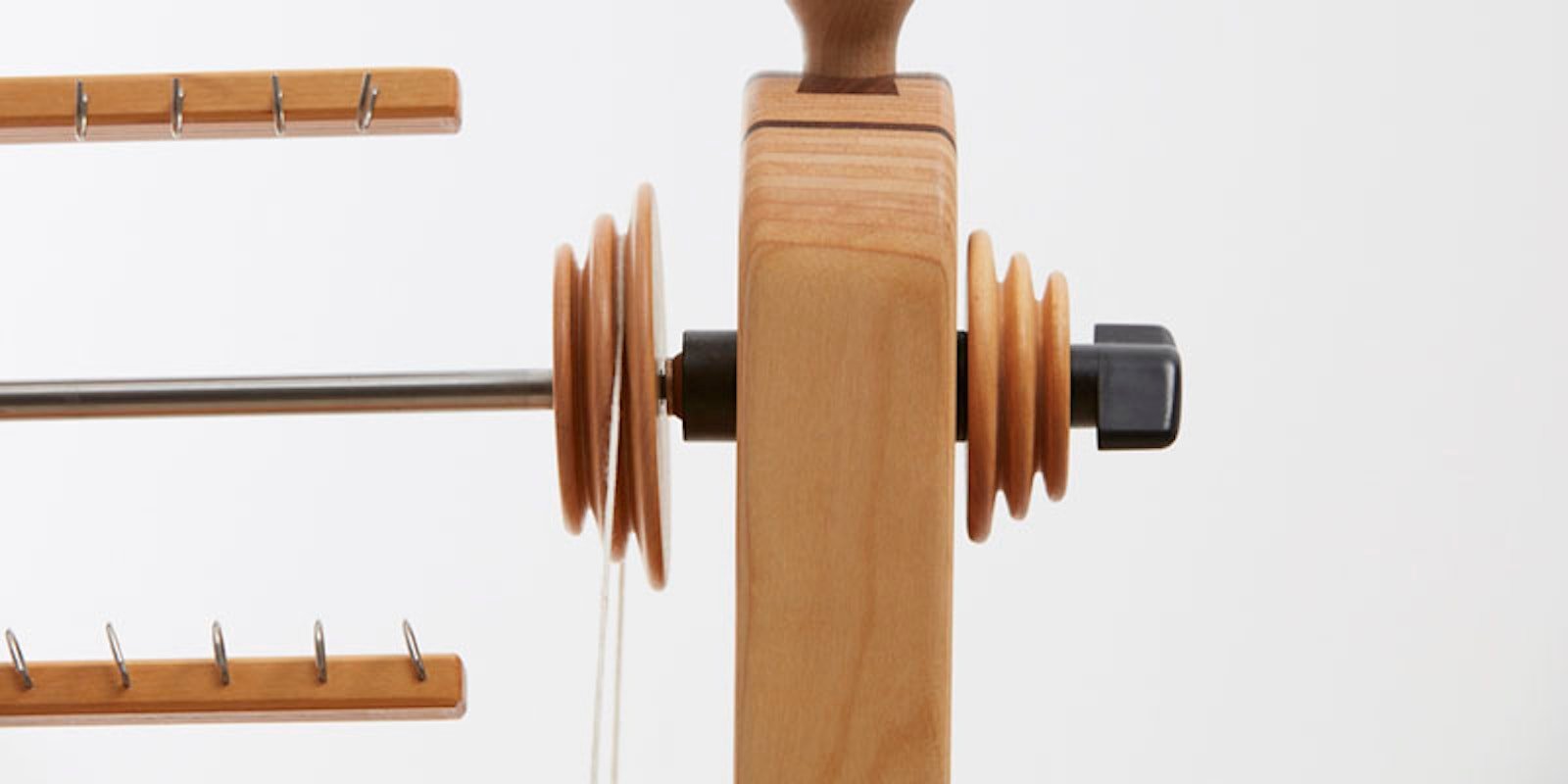By my second lesson, I had been spinning for a little over a week. The wheel and I had become close friends as we traveled to and from work together, the wheel buckled safely into my passenger seat. Now that I was more familiar with the spinning wheel, it was time to focus on controlling the diameter of my yarn.
It’s not difficult to tell the difference between my lumpy first skein and a more even second.
A Whole New Whorl
Since my first spinning lesson, I have been able to transform yarn from a muddle of fiber to a passable, almost respectable, beginner’s strand. Spinners in the Interweave office seemed impressed! I discovered that to achieve yarn of a more consistent diameter, I needed to draft the same amount of fiber each time.
During the second lesson, I learned about more ways to control yarn size. Until now, I had been spinning on the larger of two whorls on the spinning wheel; lesson two began with switching the whorls. Though I had grown more familiar with it, I still found the whole apparatus a bit intimidating, so changing anything at this point felt like a challenge.
Sure enough, even that little adjustment required other alterations on the wheel: the drive band became slacker with the smaller whorl, so I adjusted the vertical placement of the bobbin with the knob on top of the wheel. Before moving the bobbin up, I also had to add more slack to the brake band on the bobbin, as the wheel is set up in scotch tension. I continued making small tweaks until the bobbin, which had stopped turning, worked again. It turns out that the spinning wheel and I still have a long way to go before we really know each other.
The smaller whorl caused more rotations of the wheel per treadle, which resulted in more twist in the yarn. It was easier to make thin yarn because the extra twist added strength, but I had to feed the yarn onto the bobbin faster to avoid too much twist buildup. It felt a bit like spinning at hyper speed, and I found it hard to keep up.
Finding my Preference
Of the two whorls I tried, I prefer spinning on the larger one. I can feed the yarn onto the bobbin slower, which gives me more time to think about the process and my technique. As I become more skilled, I might give the smaller whorl another go if I want to spin thin yarn.
My instructor, Elizabeth, told me that preferences among spinners vary when it comes to how to control yarn size. Some spinners prefer to control it with their body and hands, as Rita Buchanan talks about in her video How I Spin. Others prefer to make adjustments to the wheel. After experimenting with both of these techniques, I found that adjusting my hands and body was easier than adjusting the wheel. By changing my treadling speed and the amount of fiber I am drafting, I can control the yarn in a way that feels simpler than changing the setup of the wheel. I’m not usually one to take the easy way out, but for now, the less complicated the better. As I become more familiar with the wheel and its parts, however, maybe this could change.
Next Steps
After a little more practicing spinning yarn for size consistency, I get to change things up a bit. So far, I’ve been spinning a white fiber. I will soon spin two bobbins of colored yarn to learn to ply threads. I’m excited to add some color to the mix and embark on the next spinning step!
Stay tuned to see the results of my colored, plied yarn in next week’s post.
—Jenna
Featured Image: I learned to spin on the larger of these two whorls. Switching them required readjustments of the bobbin and brake band.


